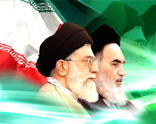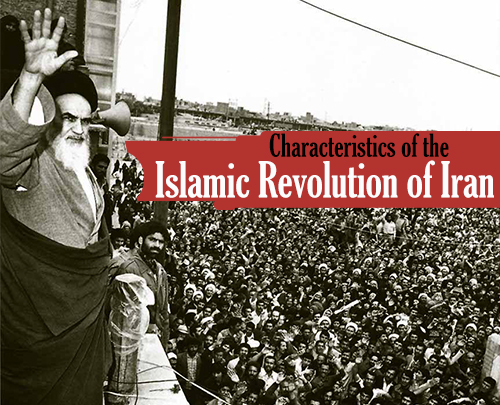Residence in a non-Muslim land was no doubt experienced by Imam Khomeini as
irksome, and in the declaration he issued from Neauphle-le-Chateau on October
11, 1978, the fortieth day after the massacres of Black Friday, he announced his
intention of moving to any Muslim country that assured him freedom of speech. No
such assurance ever materialized. In addition, his forced removal from Najaf
increased popular anger in Iran still further. It was, however, the Shah’s
regime that turned out to be the ultimate loser from this move. Telephonic
communications with Tehran were far easier from Paris than they had been from
Najaf, thanks to the Shah’s determination to link Iran with the West in every
possible way, and the messages and instructions the Imam issued flowed forth
uninterrupted from the modest command center he established in a small house
opposite his residence.
Moreover, a host of journalists from across the world now made their way to
France, and the image and the words of the Imam soon became a daily feature in
the world’s media.
In Iran meanwhile, the Shah was continuously reshaping his government. First he
brought in as Prime Minister Sharif-Imami, an individual supposedly close to
conservative elements among the ulama. Then, on November 6, he formed a military
government under General Ghulam-Rida Azhari, a move explicitly recommended by
the United States. These political maneuverings had essentially no effect on the
progress of the revolution. On November 23, one week before the beginning of
Muharram, the Imam issued a declaration in which he likened the month to “a
divine sword in the hands of the soldiers of Islam, our great religious leaders,
and respected preachers, and all the followers of Imam Hussein, Seyyed al-shuhada’.”
They must, he continued, “make maximum use of it; trusting in the power of God,
they must tear out the remaining roots of this tree of oppression and
treachery.” As for the military government, it was contrary to the Shari’ah and
opposition to it a religious duty.
Vast demonstrations unfurled across Iran as soon as Muharram began. Thousands of
people donned white shrouds as a token of readiness for martyrdom and were cut
down as they defied the nightly curfew. On Muharram 9, a million people marched
in Tehran demanding the overthrow of the monarchy, and the following day,
‘Ashura, more than two million demonstrators approved by acclamation a
seventeen-point declaration of which the most important demand was the formation
of an Islamic government headed by the Imam. Killings by the army continued, but
military discipline began to crumble, and the revolution acquired an economic
dimension with the proclamation of a national strike on December 18. With his
regime crumbling, the Shah now attempted to coopt secular, liberal-nationalist
politicians in order to forestall the foundation of an Islamic government. On
January 3, 1979, Shahpur Bakhtiyar of the National Front (Jabha-yi Milli) was
appointed prime minister to replace General Azhari, and plans were drawn up for
the Shah to leave the country for what was advertised as a temporary absence. On
January 12, the formation of a nine-member regency council was announced; headed
by Jalal al-Din Tihrani, an individual proclaimed to have religious credentials,
it was to represent the Shah’s authority in his absence. None of these maneuvers
distracted the Imam from the goal now increasingly within reach.
The very next day after the formation of the regency council, he proclaimed from
Neauphle-le-Chateau the formation of the Council of the Islamic Revolution (Shaura-yi
Inqilab-i Islami), a body entrusted with establishing a transitional government
to replace the Bakhtiyar administration. On January 16, amid scenes of feverish
popular rejoicing, the Shah left Iran for exile and death.
What remained now was to remove Bakhtiyar and prevent a military coup detat
enabling the Shah to return. The first of these aims came closer to realization
when Sayyid Jalal al-Din Tihrani came to Paris in order to seek a compromise
with Imam Khomeini. He refused to see him until he resigned from the regency
council and pronounced it illegal. As for the military, the gap between senior
generals, unconditionally loyal to the Shah, and the growing number of officers
and recruits sympathetic to the revolution, was constantly growing. When the
United States dispatched General Huyser, commander of NATO land forces in
Europe, to investigate the possibility of a military coup, he was obliged to
report that it was pointless even to consider such a step.
* Source: coiradio.com


















